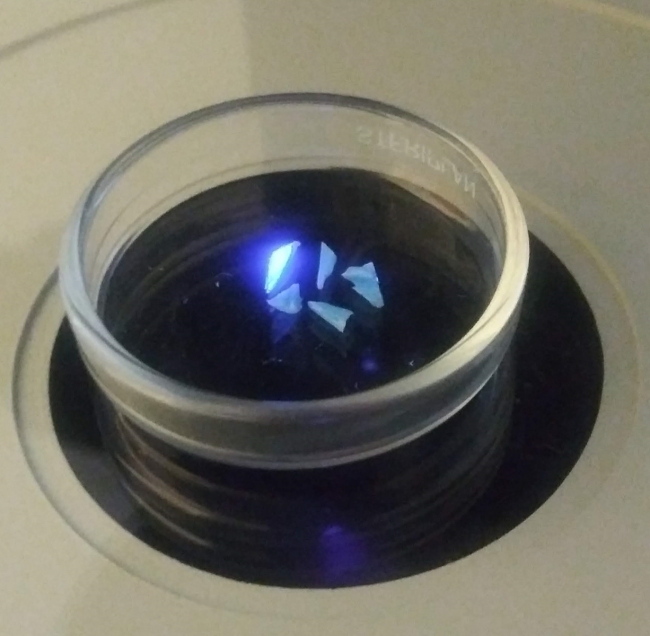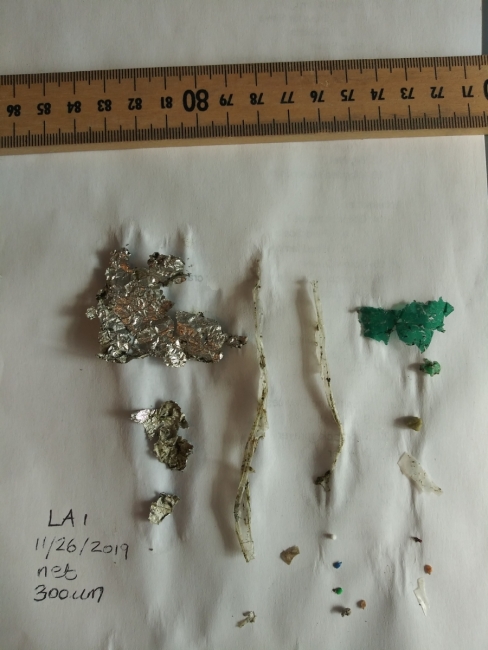Guest blog by: Andrew Gray, Assistant Professor of Watershed Hydrology, Department of Environmental Sciences, University of California Riverside
Although plastic pollution is not a new phenomenon, concerns over the environmental and human health implications of microplastics, or plastic pieces less than 5 mm in size, has grown rapidly over the past decade. These concerns stem from their potential to be ingested by wildlife, accumulate in animal bodies, and transfer contaminants up the food chain, as well as their widespread presence in the environment. To date, microplastics have been found in almost every environment on Earth, from remote mountaintops to the crushing depths of marine trenches. However, uncertainties in how chemicals impact living organisms and how microplastics travel limit our understanding.
Tides, winds, and currents can all transport marine debris and microplastics across the ocean. Coastal zones are a particularly tricky and important areas to understand. Although it is clear that river discharge is the major source of plastic pollution entering the oceans, there remains uncertainty around how plastic pollution is transported through rivers and coastal marine waters. How important is stormflow for delivering plastic pollution from rivers to the coastal ocean? How are microplastics transported through coastal environments? How much is eventually sinking and settling on the seafloor?
My watershed hydrology and earth surface processes research group at the University of California, Riverside, with the support of a NOAA Marine Debris Program Research grant, has embarked on a two-year collaborative study with scientists from the Southern California Coastal Water Research Project (SCCWRP) and the University of California, Los Angeles (UCLA) to address these questions in the Southern California Bight, with monitoring assistance from the Orange County Sanitation District and Algalita. The Southern California Bight, which extends from Point Conception to San Diego, is among the most heavily urbanized areas in the U.S., and is juxtaposed with coastal marine habitats of great ecological, commercial, and recreational value. The convergence of high potential microplastic contamination levels, with high regional investment in coastal management, monitoring, and modeling make the Southern California Bight an ideal setting for coastal microplastic pollution research in the U.S.
Our project combines monitoring and modeling approaches to better characterize the microplastic transport dynamics from the Los Angeles and San Gabriel Rivers and marine wastewater outfalls into and through San Pedro Bay waters and sediment. Most previous monitoring projects in rivers and marine environments have focused on the transport of microplastics at or near the water surface, which leads to large uncertainties regarding their overall movement throughout the water column. Monitoring for this project focuses on understanding the types of microplastics at multiple depths in rivers and marine environments, as well as sampling activities that are designed to understand the vastly different amounts and movement of water during the wet and dry seasons in Southern California, and more rapidly identifies microplastics particles. Our colleagues at SCCWRP and UCLA will use these monitoring results to inform the development of a new microplastic transport module for the Regional Ocean Modeling System (ROMS). This new modeling tool will be used to test microplastic transport scenarios in the Southern California Bight, and help inform future studies to understand the impacts they can pose to wildlife.

Through this study, our interdisciplinary team is striving to both advance the state of the science for the movement of microplastics in watersheds and the coastal ocean, but also to inform science-based management of microplastic pollution, and ultimately develop tools that fit the needs of a broad range of organizations and people that are taking on plastic pollution. Our Management Advisory Team, composed of representatives from state and regional regulatory agencies, and environmental advocacy groups, will be essential to guiding the development of management decisions and future research toward addressing the most urgent microplastic questions in Southern California and beyond. The future of microplastic research is collaborative, and that means bringing together diverse groups of scientists and stakeholders to better understand this problem and navigate toward real-world solutions.


